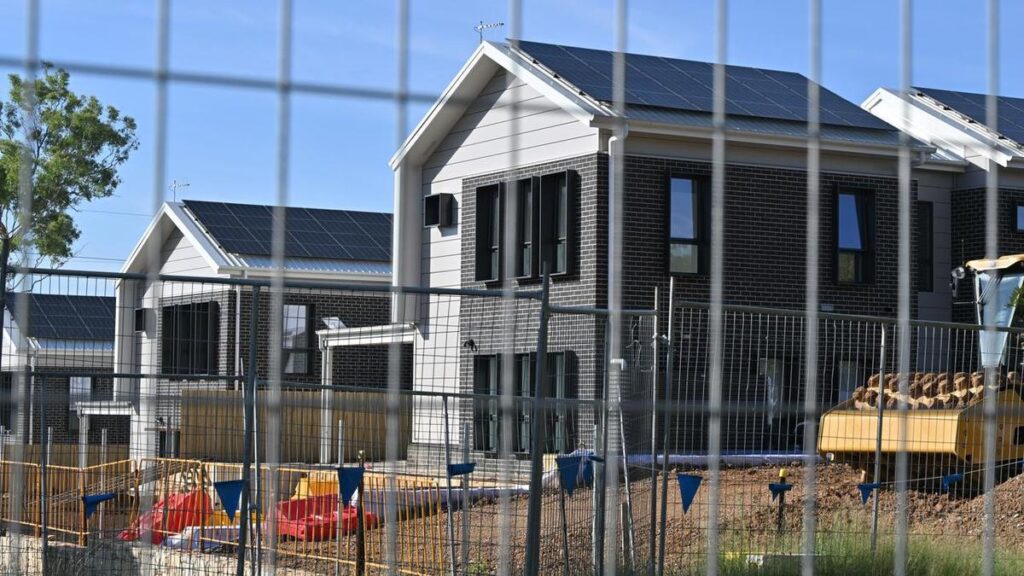Regulation and red tape have made building and buying a home in Australia too hard, the prime minister says, as average national prices officially top a million-dollar milestone.
Anthony Albanese says the federal government must push local authorities to make it more affordable to build in order to help fix the housing shortage.
His comments came as the nation’s average price of a residential dwelling surpassed $1 million for the first time, according to Australian Bureau of Statistics figures released on Tuesday.
Figures from the ABS show the national mean dwelling price sat at $1,002,500 in the March quarter, a 0.7 per cent increase over the previous three-month period.
The total value of the nation’s residential dwellings rose by $130.7 billion to a staggering $11.4 trillion.
Mr Albanese said it was too complex and expensive to get a project off the ground, adding that Housing Minister Clare O’Neil had been tasked with reducing those barriers.
“It is too hard and one of the areas is regulation,” he told the National Press Club.
He also backed NSW Premier Chris Minns’ failed bid to redevelop Sydney’s Rosehill Racecourse, describing the controversial proposal as “absolutely right”.
The proposal aimed to transform the 140-year-old track into a “mini-city” encompassing about 25,000 homes, but it was ultimately voted down by the racecourse owner’s members.
“That’s the sort of thing that we’re going to need to do. You can’t deal with supply issues without having the courage to do things like that,” Mr Albanese said.
“(We) want to make sure that housing is fit for purpose and all of that but if we can cut through on some of the red tape, then that will reduce costs.”
According to the ABS, the increase in residential dwellings was fuelled by housing markets in Queensland, Western Australia, and South Australia.
While NSW remains Australia’s most expensive property market with a median price of $1.25 million, Queensland has become the second-priciest market in the nation at $944,700.
Though prices are rising, further interest rate cuts could slow the pace of increases compared to the same period last year.
“Despite the quarterly rise in national dwelling value, annual growth in the March quarter slowed to 5.9 per cent,” ABS head of finance statistics Mish Tan said.
Data reveals the average price in the ACT went backwards, falling to $941,300, as the Northern Territory maintains the lowest mean price at $517,700.
Eliza Owen, head of research at Cotality, told AAP it was not a surprise the nation’s property market continued to be pushed to record values.
“(It comes) off the back of long-term constraint on housing supply, compounded by more recent factors like interest rate reductions, which increase access to finance,” she said.
Ms Owen noted the interest rate reduction earlier this year helped reinvigorate demand across the housing market on a fairly broad basis.
“For South Australia, Queensland, and Western Australia, these states continue to be buoyed by other factors on top of cheap access to finance, such as stability, and strength in population and labour market growth, which has fundamentally been supporting demand as well,” she said.
While the average dwelling price has reached seven figures for the first time, Ms Owen said factors such as rate reductions had given markets like Sydney a “sugar hit”, rather than triggering a large upswing like the robust growth seen in 2021.
https://thewest.com.au/politics/million-dollar-dream-building-a-home-too-hard-pm-says-c-18986384


